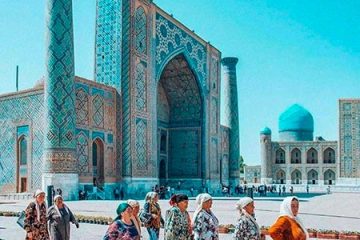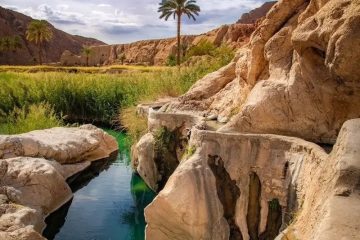Kerman Extension and Desert Enchantment
7 days/ 6 nights
Landscapes and routes are part of the trip. The dominant colors of each site give a clue to the traveler about the locals. Passing through the pistachio fields in Kerman, we can see the farmers pampering the trees. Summer is the ideal time to walk among the treasures of the zone that produce one of the best agricultural products in the whole country. The pistachio tree can reach up to 5m with leaves composed of three leaflets, violets, dioecious flowers, gathered in panicles and yellowish or reddish fruits, similar to those of the olive tree, containing an aromatic and sweet seed. Etymologically, the term pistachio comes from the Latin pistacium borrowed from the Greek (Pistakion) that had come from the Persian (pesteh). Apart from its pleasant taste that it leaves in the mouth, it has defined a particular green color, pistachio green.
When Dino Buzzati was writing “The Desert of the Tartars”, he never imagined that one day Iran would be the location for a movie based on his book, perhaps because it was the only place in the world that fit the author’s imagination.
| DEPARTURE LOCATION | Shiraz | ||||
| RETURN LOCATION | IKA International Airport | ||||
| INCLUDED |
| ||||
| NOT INCLUDED |
|
1° Day; Shiraz - Meymand
After breakfast, departure to the village of Meymand (World Heritage Site) which is a rocky village and one of the earliest human settlements in Iran.
On the way, we will also visit the Maharloo Lake, a seasonal salt lake with pink marshes, an absolutely cinematographic panorama of the pink salt workshops
- The Sassanid Castle in Sarvestan (the Sassanid palace) is one of the main baroque style castles that has remained from the Sassanid period. The Sarvesan Palace was a hunting lodge, built by King Bahramgur, where he went to hunt zebras. This palace dates back to the 5th century AD and is an excellent example of dome construction. For those who are interested in the fundamental basis of mosque construction during the Islamic period, it is recommended to contemplate the simple formula of multiplication by 4, which has been used in the elevation of the dome. This dome, based on a square plan, takes on a circular shape through the protruding brick tubes at each corner.
We continue the trip with a visit to one of the oldest mosques in Iran in Neiriz with a fabulous Mihrab.
Afterwards, we continue to Meymand along a scenic road. In the afternoon, we will have reached Meymand, a spectacular village reminiscent of life 8000 years ago. Inhabited for over 3000 years, the village consists of 2,560 rooms inside 406 rock-cut caves. Also, it was a Zoroastrian site and the cave that now houses the small museum was a fire temple. The villagers make their living from agriculture and livestock.
Dinner and overnight in a restored house in Meymand which makes the visit worthwhile.
2° Day; Meymand - Kerman
Having spent a night in a cave, we leave for Kerman.
Due to Kerman’s strategic position, this city enjoys a great history. Kerman, located in the southeast of the country, opens the way to India and Pakistan and from the south leads to Bandar Abbas and the Persian Gulf. In fact, Kerman was one of the satrapies of the Persian Empire which provided access to the cities of Babylon, Susa and Persepolis. During various dynasties, the importance of this city was never diminished even in the Sassanid (3rd century A.D.) and Safavid (16th-18th centuries) eras. Kerman offers a fascinating bazaar to all lovers of popular places where they meet different ethnicities and races. Despite intercultural exchange between Kerman and neighboring countries such as Pakistan and Afghanistan, the anthropological hallmark of the region is undoubtedly a group of Iranian tribes, Baluchi. The Baluchis are an ancient and authentic Iranian ethnic group who have preserved their customs since ancient times. They settled in Iran in the 12th century and in the Mongol period their territory became known under the name “Baluchistan”. As for the meaning of the controversial word Baluch, people disagree: some say it means nomad, while others say it is an old Persian word meaning is “the cock’s crest”.
Arrival in Kerman. During the trip to Iran, you can visit two magnificent complexes that have remained from the Safavid era; considered as the only elements of Renaissance architecture. The first is Naqsh-e Jahan Square in Isfahan and the second one is in Kerman, Ganjali Khan Square. Both works are contemporary, but with different monuments and decorations from each other. On one hand, the focus of the constructions was magnificent mosques in Isfahan, and on the other hand they built an elegant caravanserai and a wonderful hammam (Turkish bath) in Kerman. In Gajali Khan Square, there is a water cistern, a wind tower under which was the coin minting was located. They represent the architectural divergences largely adapted to the climate and governmental needs of the 1600s.
- Ganjali Khan Complex: In almost every oriental country there is an ancient hammam to visit, but what distinguishes this bath from others is its majesty and breathtaking beauty. This thermal complex is divided into three different parts: frigidarium (the place to take cold baths), tepidarium (the room of warm baths) and caldarium (the room of hot bath). What highlights the beauty of this bathhouse is the decoration of the walls and the position of the pools in the first room. Each space was reserved exclusively for a particular social class: the descendants of the Prophet, clerics, nobles, merchants and farmers. In addition to the regular tiles, majolica tiles with bright instructions have also been used at all times. If you want to see the sundial, you should enter the royal hall where you can see a stone block with a thickness of 10 cm. People used to measure the passing of time standing over this stone and called it the sun dial.
Dinner at a restaurant and overnight stay at the hotel.
3° Day; Kerman - Rayen - Bam
Departure to the Bam Citadel (World Heritage Site) made of adobe. The citadel was completely destroyed in an earthquake in 2003. Given the new excavations, it is estimated that the first settlement dates back to the sixth millennium B.C. The citadel of Bam was used as a film location for Zurlini’s movie “The Desert of the Tartars”.
The journey continues to Rayen, a splendid citadel made of adobe, a typical example of ecological desert architecture in the Sassanid era in the 4th century AD. Rayen Citadel was divided into several places and quarters: dwellings reserved for the elites and ordinary people, bazaar, grain store, part of the bourgeoisie and royal castle. The citadel has 15 towers with a corridor that allowed the soldiers to move from one to another and the holes at the apex of the towers were used to monitor the citadel, from above, by archers every movement around the fence. Rayen is located approximately 2200 meters above sea level, so the desert landscape and the mountain behind the citadel offer a picturesque image to the visitor.
Dinner and overnight stay at a hotel in Bam.
4° Day; ; Bam - Mahan - Kalut
Departure to the Kaluts desert. In Shahdad, the last inhabited area on the edge of the Lut Desert, there is a very special Nebka, also known under the name Tamarix, which in the Lut Desert reaches a height unequaled by any other desert on the planet. In the east of the desert, there is a not very high plateau that is covered with a layer of salt, although the center of the desert is sculpted by the wind in a series of parallel ridges and hollows whose height reaches up to 70 meters. After visiting Shahdad, the journey continues to discover the Yardang, the ridges created by the erosion caused by wind, which lie shortly after the village. Yardang is known by the name “Kalut” in Persian, while it is etymologically derived from Turkish. The Kaluts are believed by the locals to be the work of jinns, supernatural creatures in pre-Islamic Arab world. Actually, they are formed by wind blowing in the same direction that has resulted in the erosion of the rocks over the millennia. Dasht-e-Lut is listed as a UNESCO World Heritage Site of Iranian Nature. During the short rainy season in spring, snow melt from the Kerman Mountains floods the area, although within a short time it dries up and leaves rocks, sand and salt behind.
In the afternoon, we leave for Mahan on the way back to Kerman. The blue dome of Shah Nematollah Vali Mausoleum, one of the most important figures of the religious doctrine called “Sufism” in the Middle East, immediately catches the eye. After that, we continue to the Prince’s Garden (Baq-e Shahzadeh), a unique model of Persian gardens where the cascading waterfalls make the Persian Garden a real paradise on earth in the heart of the monochromatic desert of Kerman.
Dinner and overnight stay in a local camp or house in the desert.
5° Day; Kalut
Desert tour in 4WD.
6° Day; Kalut - Kerman - Tehran
Excursion through the desert and after lunch, departure to Kerman and transfer to the airport for domestic flight to Tehran.
Arrival in Tehran. Transfer to Tehran airport, dinner and overnight stay at IBIS hotel.
7° Day; Tehran - Destination Country
Transfer to Imam Khomeini International Airport (IKA) departing Tehran to destination country.






Tour Reviews
There are no reviews yet.
Leave a Review